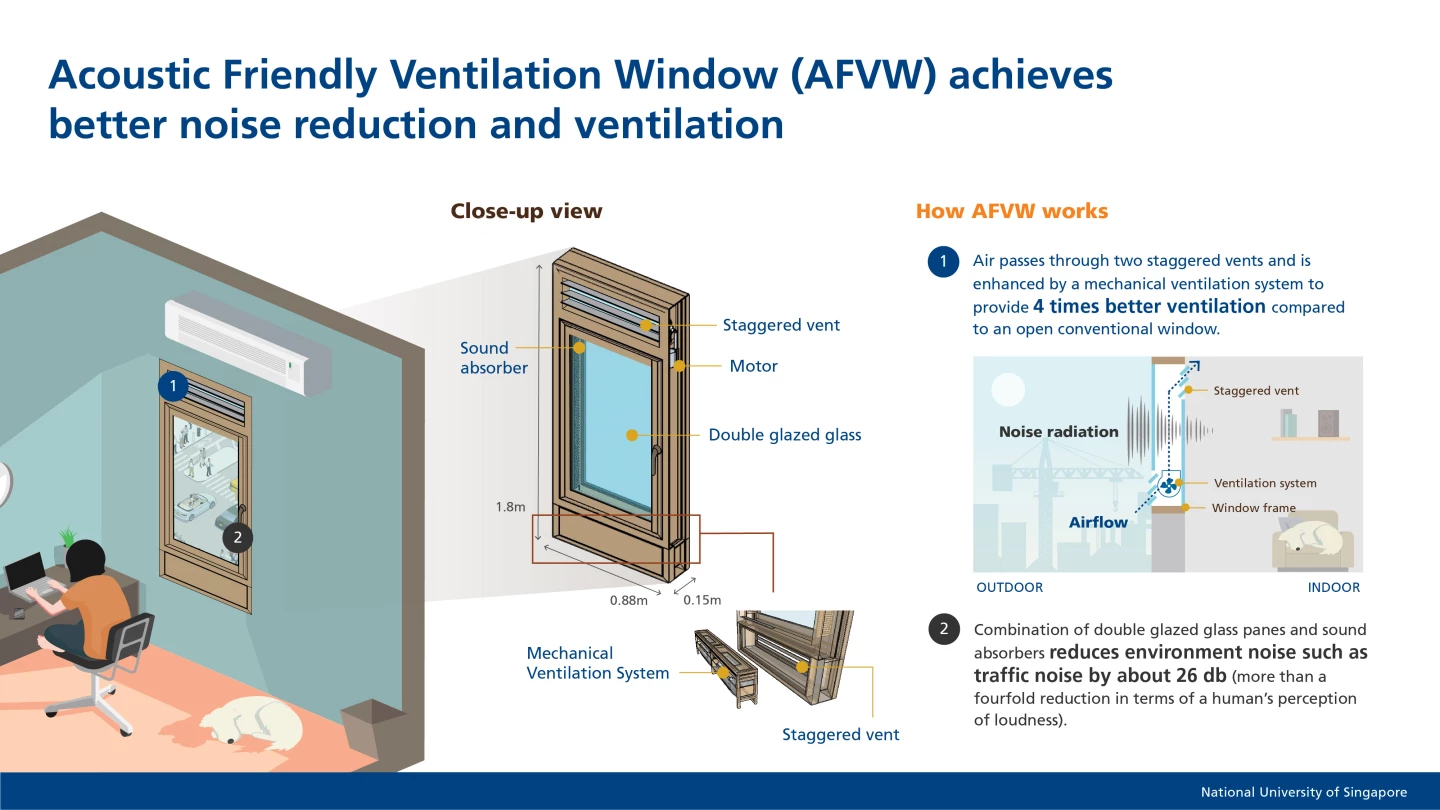The act of opening a window may help ventilate a room, but it also lets in a lot of outdoor noise such as the honking and revving of traffic. A new window could help, as it's claimed to bring in more fresh air than a conventional open window, while still keeping out unwanted sounds.
Developed by scientists at the National University of Singapore, the Acoustic Friendly Ventilation Window (AFVW) measures 1.8 m heigh by 0.88 m wide by 0.15 m thick (5.9 by 2.9 by 0.5 ft). It's also double-glazed – this means it's made up of two 0.6 cm-thick (0.2 inch) panes of glass, with an 8.5-cm (3.3-in) air gap between them.
There are two horizontal louvered vents built into the assembly, one above the actual glass window itself, and one below it. The bottom vent is open to the outdoors, while the top vent opens into the room. An electric ventilation unit (basically a cylindrical fan) in the lower vent draws fresh air in from outside, pushing it up through the air gap between the panes, and out of the top vent into the building.
Along its way through the window, the air passes through a dust filter that removes pollutants. Additionally, sound-absorbing material located along either side of the air gap limits the amount of noise that makes its way in from outside. As a result, the setup is claimed to provide four times better ventilation than a conventional open window of a similar size, while also providing a fourfold reduction in the perception of outdoor ambient noise.

There's no word on the ventilation unit's power consumption, although it would be lower than that of an air conditioner, and likely similar to that of a standalone fan within the room.
The AFVW is currently being assessed at the university's Smart Green Home testbed facility, where it was first installed in December of 2019. Details regarding its possible commercialization have yet to be released.
Source: National University of Singapore






